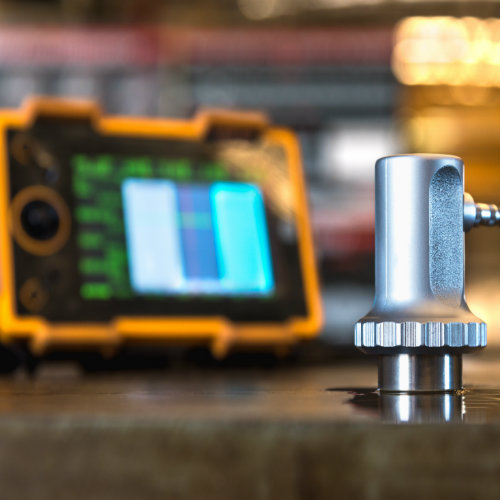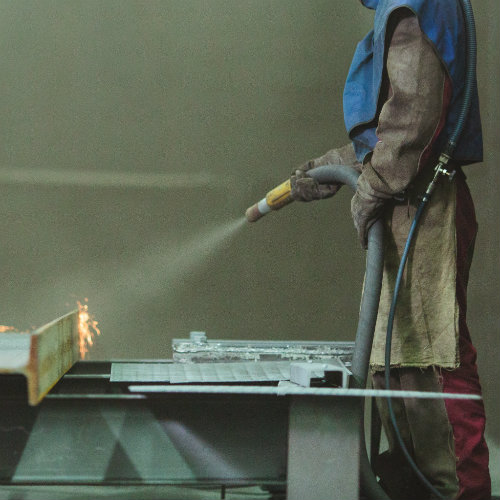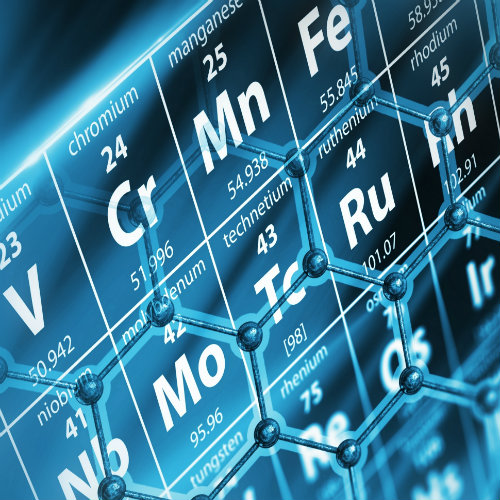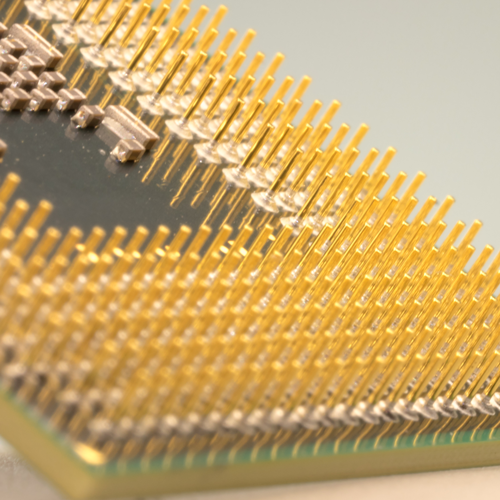Phosphoric Anodize
In the multifaceted department of aerospace finishes, one process stands as a cornerstone for producing components that are not only resilient but also perfectly primed for bonding. That process is phosphoric acid anodize. Essential to the aerospace industry, this electrochemical treatment is the key to ensuring aluminum parts endure the rigors of their application environments while maintaining their structural integrity.
What Is Phosphoric Anodize?
Phosphoric anodize is a specialized form of anodizing that uses phosphoric acid to create a protective oxide layer on the surface of aluminum parts. This process is essential in the aerospace industry, where metal components must withstand extreme conditions and adhere reliably to structural adhesives. Let’s explore the specifics and the impact this innovative treatment has on aircraft components.
The Science Behind Phosphoric Anodizing For Aircraft Components
Phosphoric anodizing is more than a simple coating; it’s a scientific method that significantly enhances metal surfaces. By immersing aluminum parts in a phosphoric acid solution and applying an electrical current, an oxide layer forms on the surface. This layer improves corrosion resistance and ensures better adhesion for paints and bonding agents, critical for the assembly and longevity of aircraft.
Understanding Phosphoric Anodize And Its Applications In Aviation
Aviation relies on phosphoric anodize for its unique properties that guarantee safety and efficiency. This treatment method supports various applications, ensuring parts perform at their best when it matters most.
Priming Surfaces For Adhesive Bonding
Crafting an aerospace structure demands precision and enduring bonds, and here phosphoric anodize acts as a key preparation step. It meticulously conditions aluminum surfaces to create an exceptionally receptive base layer for adhesives, facilitating unions that define the aircraft’s structural resilience. The precise nature of Valence’s anodizing process ensures the uniformity of this crucial layer, providing reliability in the performance of every bonded joint.
Enhancing Corrosion Resistance
In the battle against corrosion, the oxide layer bestowed by phosphoric anodize is an aluminum component’s first line of defense. This protective shield mitigates the decaying effects of oxidative elements, safeguarding the integrity of each part. By extending the resistance to corrosion, Valence’s expertly applied anodizing services prolong the service life of components that are essential to the safe operation of every aircraft.
Improving Paint Adhesion
Consider the life of an aircraft—it must withstand velocities and altitudes that would compromise lesser finishes. Phosphoric anodize offers an optimal surface that not only firmly anchors paints but also contributes to their vibrancy and longevity. Valence understands that paint adhesion goes beyond cosmetic appeal; it is a critical layer that serves both brand representation and protective functionality.
Ensuring Part Longevity
The ultimate test for any aeronautical component is time itself. Phosphoric anodizing imbues parts with the resilience necessary to sustain the ceaseless demands of flight. This process is instrumental in decreasing the likelihood of fatigue and wear, allowing aerospace components to serve safely over extended periods.
Valence’s Expertise In Delivering Quality Phosphoric Anodizing
Valence is a pioneer in surface technologies, including phosphoric anodizing. Their commitment to quality and innovation positions them as a partner of choice in the aerospace industry.
State-Of-The-Art Facilities
At the heart of their operation, Valence’s state-of-the-art facilities represent a beacon of modern surface technology. Purpose-built to accommodate the intricate demands of phosphoric anodizing, these facilities house the latest in high-precision machinery and automated systems. This advanced technology allows them to achieve uniform treatments that customers can rely on for their most critical projects, raising the bar for what’s possible in aerospace component finishing.
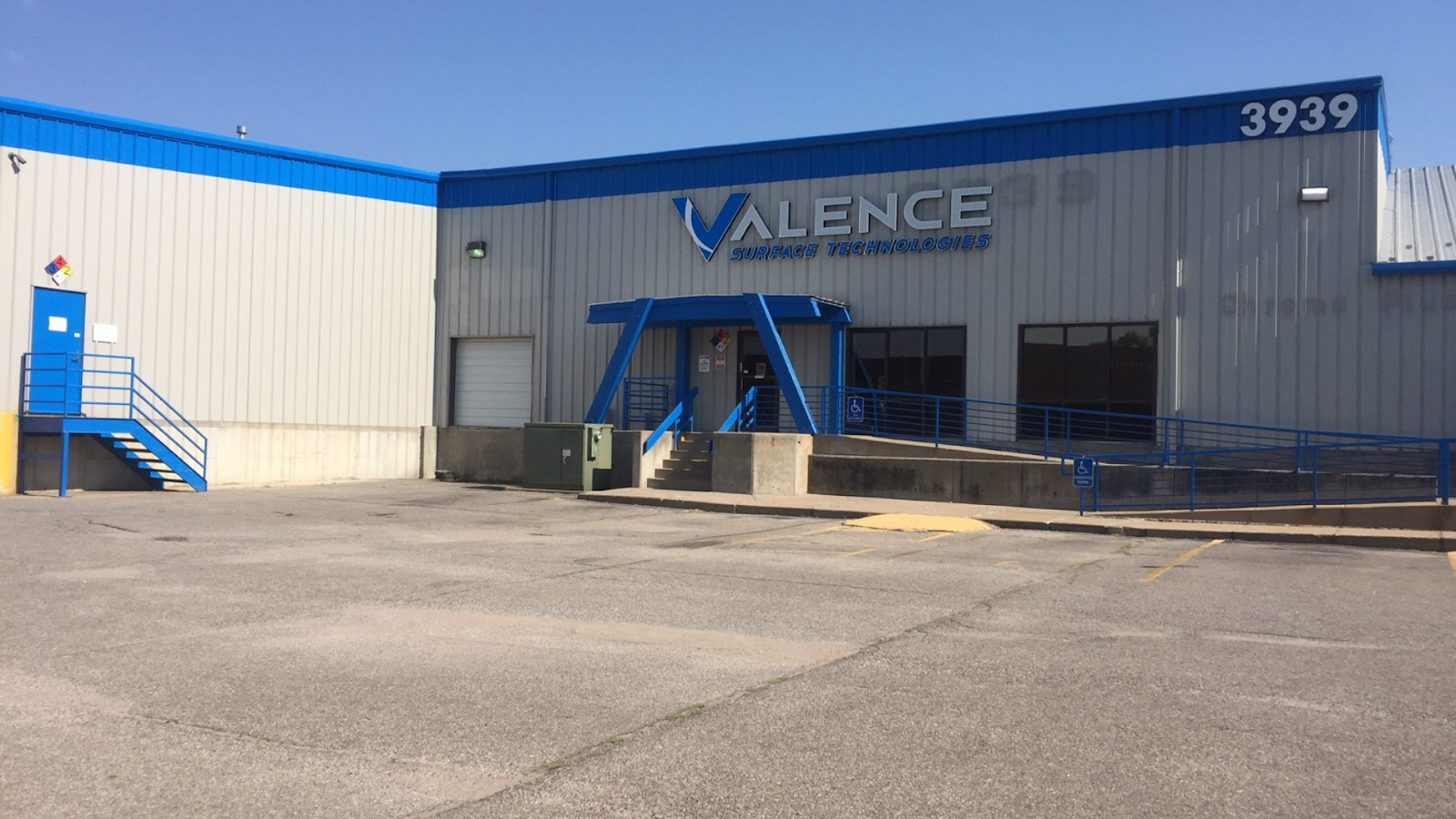
Industry Accreditation
Valence’s prominence is further cemented by the industry accreditations they have been awarded. Recognized by governing aerospace bodies, these accolades affirm that Valence not only meets but often surpasses the rigorous industry standards. Committing to such high levels of quality control underlines Valence’s pledge to deliver nothing short of excellence with each phosphoric anodizing task they undertake.
Customized Solutions
Embracing the fact that each aerospace component carries its unique challenges and requirements, Valence prides itself on its capacity to deliver bespoke phosphoric anodizing solutions. Their flexible approach, which accommodates the specific nuances of every part they handle, ensures that clients across the aerospace industry receive a finish exactly tailored to the application’s demands, demonstrating Valence’s exceptional ability to adapt and respond to a wide array of specifications.
Technical Support And Service
The service at Valence transcends the mere delivery of superior anodized components. The company envelops its clients in a full spectrum of technical support and service, boasting a skilled team that is committed to educating and assisting customers from project inception to completion. This unparalleled after-service care ensures that every client’s expectations are not just satisfied but surpassed, embedding a sense of partnership that goes far beyond the transaction.
Why Phosphoric Anodize Protocols Are Key To Manufacturing Success
In aerospace manufacturing, following strict protocols for phosphoric anodizing is not optional—it’s imperative. These guidelines ensure consistency, safety, and compliance across the board.
Enhancing Manufacturing Reliability
Maintaining a steadfast grip on reliability, manufacturers like Valence understand that adhering to phosphoric anodize protocols is instrumental in ensuring each component’s performance is dependable and consistent. These protocols serve as the foundation for the manufacture of parts that can withstand the demands of aerospace operation, reflecting a commitment to upholding the high standards of quality and integrity essential for aircraft production.
Complying With Safety Standards
Safety in the skies begins with adherence to rigid standards on the ground. Phosphoric anodizing protocols, as championed by Valence, cater to the industry’s thorough safety requirements. This compliance is a testament to the company’s dedication to the welfare of those who depend on the reliability of their work, from the engineers who craft the aircraft to the passengers who travel within them. Valence takes pride in knowing that every component they treat with phosphoric anodize is a cog in the machine of a safer aviation industry.
Streamlining Production Processes
Protocols in phosphoric anodizing also offer a blueprint for achieving unrivaled efficiency in manufacturing processes. By standardizing every aspect of the anodizing procedure, Valence brings order and predictability to production lines, significantly reducing the potential for variability and error. This well-oiled machine ensures that deadlines are met, quality assurance is straightforward, and production remains agile.
Valence Surface Technologies Comprehensive Approach To Phosphoric Anodizing
At Valence Surface Technologies, phosphoric anodizing is approached with a comprehensive methodology that underscores their dedication to setting benchmarks in the aerospace finishing industry.
Wide-Reaching Service Network
Valence has cultivated an extensive network of facilities, strategically located to deliver top-tier phosphoric anodizing services across the nation. This robust network not only affirms Valence’s commitment to accessibility but also to efficiency, ensuring that wherever the demand arises, their expertise in anodizing is within reach. By providing services close to their clients, they minimize logistical challenges, guaranteeing a swift response and delivery.
Integrated Quality Controls
Throughout each phase of the anodizing process, Valence upholds a regime of stringent quality controls that act as the checkpoints of excellence. This vigilance in monitoring ensures that each batch of components emerges from the anodizing baths with a finish that is uniform, durable, and compliant with the technical demands of the aerospace industry.
Leading-Edge Innovation
Innovation is engrained in the fabric of Valence Surface Technologies, as evidenced by their ongoing investments in research and development. By continuously exploring and adopting leading-edge techniques in phosphoric anodizing, Valence positions itself at the cutting edge of surface treatment technology. Their commitment to pushing the envelope of what’s possible enables them to develop and refine methods that lead to better, more efficient, and more reliable finishing services.
Commitment To Customer Satisfaction
At the core of Valence’s operations lies a deep-seated commitment to the satisfaction of each client they serve. The company understands the importance of catering to the unique needs of every project, offering personalized services that ensure optimal results. By fostering open lines of communication, Valence makes collaborative partnerships its gold standard, intuitively responding to feedback and requirements to ensure that their clients’ experiences are as seamless as they are successful.
Tailoring Phosphoric Anodizing For Military And Defense Excellence
In the defense sector, phosphoric anodizing is tailored to meet the uncompromising standards required for military applications, ensuring equipment performs reliably in the most demanding situations.
Specifications For Defense Applications
Valence’s precision in phosphoric anodizing services meets the distinct requirements of the military and defense industry. They meticulously tailor their processes to align with the specialized needs of these critical applications, ensuring that every anodized component can be integrated seamlessly into military machinery with full confidence in its performance.
Security And Confidentiality
A staunch commitment to security and confidentiality defines Valence’s approach to military component finishing. Recognizing the sensitive nature of these materials, Valence upholds stringent protocols to preserve the integrity of both their processes and the critical components they handle.
Durability In Harsh Conditions
Valence ensures that phosphoric anodizing equips military hardware with the ability to withstand harsh operational conditions. This focus on durability delivers dependable functionality where it matters most, directly impacting the effectiveness and readiness of military forces.
Partnering With National Defense
Through their phosphoric anodizing services, Valence reinforces its partnership with national defense. Their dedication to excellence and reliability plays a pivotal role in bolstering the defense sector’s capacity to maintain safety and operational readiness.
Exploring The Science And Benefits Of Phosphoric Anodizing
The exploration into the science of phosphoric anodizing reveals its numerous benefits, positioning it as an indispensable treatment in the aerospace sector and beyond.
Interplay With Aerospace Materials
Valence Surface Technologies has mastered the anodizing process to ensure it enhances the attributes of various aerospace materials, fostering a symbiotic relationship with the substrates it alters. The tailored anodizing treatment empowers these materials with increased corrosion resistance and paint adhesion, elongating their lifespan and maintaining their structural integrity in the face of operational challenges.
Contribution To Aerospace Innovation
Phosphoric anodizing has proven to be a linchpin in the evolution of aerospace technology. As Valence fine-tunes this process, they contribute significantly to the enhancement of component performance, leading to breakthroughs in design and functionality that propel the aerospace industry forward.
Meeting Eco-Friendly Standards
In today’s environmentally conscious landscape, Valence ensures that their phosphoric anodizing processes not only meet high-performance standards but also adhere to eco-friendly practices. Their commitment to sustainability is evident in the reduced environmental footprint of their anodizing operations, striking a balance between industrial excellence and ecological responsibility.
Through meticulous processes, innovative practices, and tailored solutions, Valence Surface Technologies enhances phosphoric anodizing, ensuring components meet precise standards for the aerospace, defense, and beyond. The article showcases how this specialized treatment is integral to driving safety, efficiency, and innovation in high-performance industries.
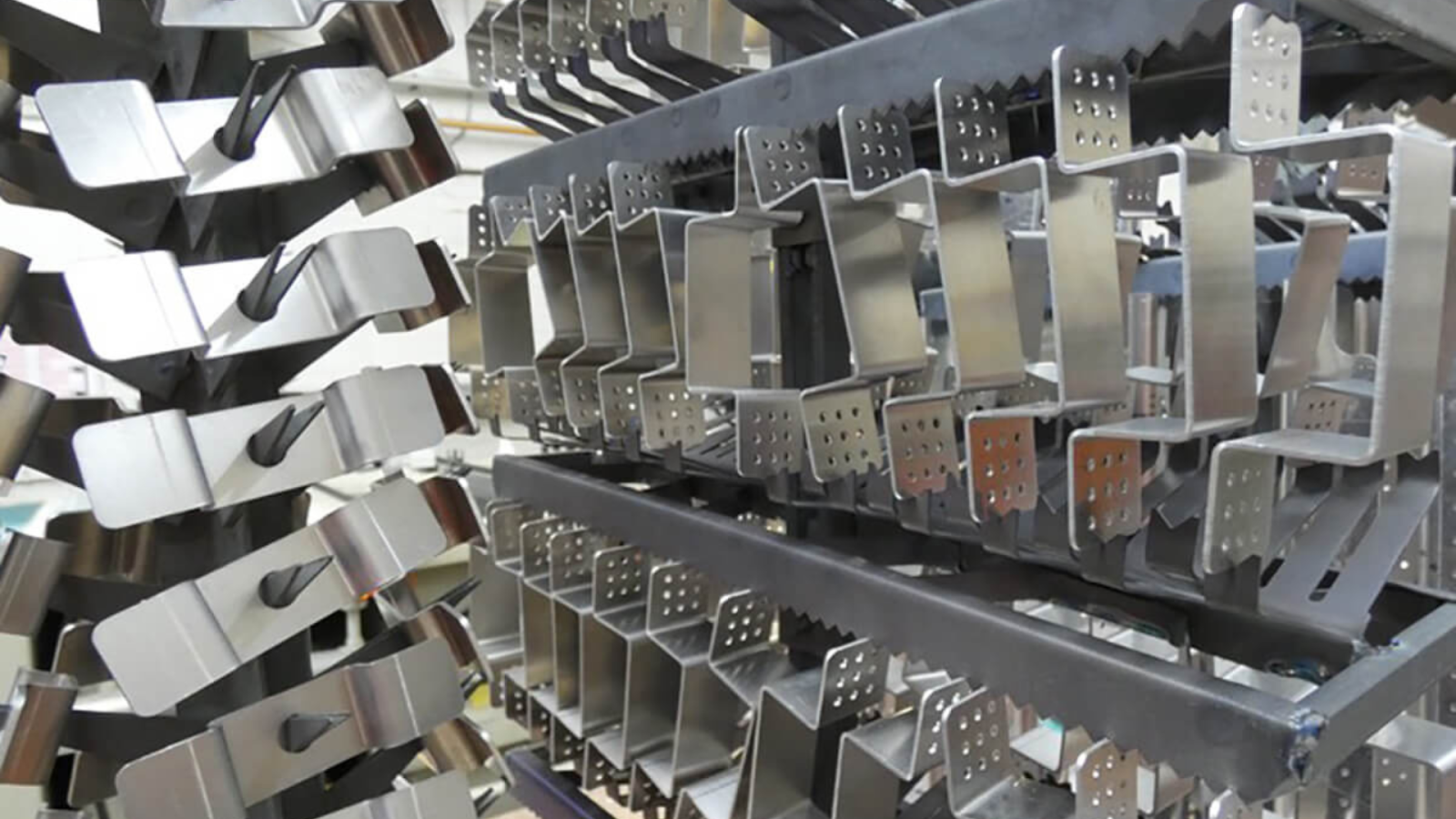
Final Thoughts
Phosphoric acid anodize is more than just a protective layer; it is a catalyst for innovation in the aerospace field. By partnering with Valence for phosphoric acid anodizing needs, aerospace manufacturers ensure that their components are not just treated but transformed, prepared to meet the exacting standards of an ever-evolving industry.
Frequently Asked Questions About Phosphoric Acid Anodize
How does phosphoric anodize differ from other forms of anodizing?
Phosphoric anodize utilizes phosphoric acid specifically, creating a distinct oxide layer on aluminum surfaces, unlike other anodizing methods.
Does phosphoric anodizing impact the weight or dimensions of treated aerospace parts?
Generally, phosphoric anodizing doesn’t significantly alter the weight or dimensions of the treated parts due to its thin layer formation.
Can phosphoric anodize be applied to other metals besides aluminum?
While primarily used on aluminum, phosphoric anodizing can be adapted for other metals with varying degrees of success.
How does Valence ensure uniformity in their phosphoric anodizing process?
Valence utilizes advanced machinery and automated systems in purpose-built facilities to achieve precise and uniform treatments.
Does phosphoric anodize affect the electrical conductivity of aluminum parts?
The thin oxide layer created by phosphoric anodize typically doesn’t significantly impact the electrical conductivity of aluminum.
Are there any limitations to the size or complexity of components that can undergo phosphoric anodizing?
Generally, phosphoric anodizing can be applied to various sizes and complexities of aluminum parts used in aerospace.
What is the expected lifespan of components treated with phosphoric anodize?
Components treated with phosphoric anodize exhibit an extended service life due to improved resistance to corrosion and wear.
What specific aerospace standards does Valence comply with in their phosphoric anodizing process?
Valence adheres to stringent aerospace industry standards such as AS9100 to ensure quality and compliance.
Can phosphoric anodizing be performed on a small scale for specialized aerospace projects?
Valence offers customized solutions, accommodating the specific requirements of individual aerospace projects regardless of scale.
Does Valence offer consulting services for companies looking to adopt phosphoric anodizing in their processes?
Valence provides technical support and guidance, aiding companies in implementing phosphoric anodizing effectively.
Sources:
- Khana, A. S., & Malhotra, D. R. (2004). Formation of a duplex oxide film on aluminium in phosphoric acid containing Mn2+ ions. International Journal of Surface Science & Vacuum Physics, 76(3-4), 204-212. https://www.sciencedirect.com/science/article/abs/pii/S0925838820329753
- Zhang, J., et al. (2016). Investigation of pore morphology and properties of porous anodic aluminum oxide films formed in phosphoric acid using electrochemical impedance spectroscopy. Corrosion Science, 102, 255-267. https://www.sciencedirect.com/science/article/pii/S138824812200193X
- Aravindakshan, N., et al. (2017). Effect of operating parameters on the characteristics of phosphoric acid anodized titanium oxide nanotubes. Electrochimica Acta, 245, 527-536.
- Cianchetti, M., et al. (2018). Anodic oxide coatings for adhesive bonding of aerospace aluminum alloys: A review. Progress in Materials Science, 94, 359-443. https://www.sciencedirect.com/topics/engineering/anodic-coating
- Khambatta, O. P., et al. (2014). Development of novel surface treatment processes for improved bond strength of aerospace aluminum alloys (Report No. NASA/TM-2014-215805). NASA Glenn Research Center. https://archive.org/details/NASA_NTRS_Archive_19800018496
- Baral, D., et al. (2009). Optimization of phosphoric acid anodizing process for aluminum alloy 6061. Defence Science Journal, 59(3), 226-233. https://link.springer.com/article/10.1007/s11665-023-08717-4
- Ahearn, J. F., & Uhlig, H. H. (1960). The corrosion behavior of anodized aluminum in sodium chloride solutions. Journal of the Electrochemical Society, 107(10), 827-830. http://www.electrochemsci.org/papers/vol11/110201355.pdf
- Baral, D., et al. (2011). Effect of anodizing on the electrical conductivity of aluminum 6061. Materials Research, 14(5), 506-510. https://www.sciencedirect.com/science/article/abs/pii/S0010938X09002881
- Hussain, S. A., & Ahmed, W. (2020). Applications of anodized aluminum in the aerospace industry. Materials Today: Proceedings, 33(8), 2915-2919. https://www.sciencedirect.com/topics/earth-and-planetary-sciences/aerospace-industry
- (2023). Phosphoric Acid Anodizing. Valence Surface Treatments. [Company Website] https://www.valencesurfacetech.com/services/chemical-processing/
Valence offers every variety of anodizing, including but not limited to:
Type I Anodize
- Boric Anodize – Boric-Sulfuric Acid Anodize (BSAA) is an alternative to chromic acid anodize (CAA), that builds a thin-film anodic coating and provides corrosion protection and a mechanical bond. This is a
non –chromated , environmentally friendly solution. - Tartaric Anodize – Tartaric-Sulfuric Anodize (TSA) is an alternative to chromic acid anodize (CAA), that builds a thin-film anodic coating and provides corrosion protection and a mechanical bond. This is a
non chromated - Chromic Anodize – Chromic Acid Anodize (CAA) creates the thinnest anodic
coating, while providing the same corrosion resistance as other types of anodization, such as boric or sulfuric.
Type II
- Sulfuric Anodize – Sulfuric Acid Anodize (SAA) is used when hardness and abrasion resistance is required on a
part, and creates a surface that is harder than traditional chromic anodizing.
Type III
- Hard Anodize – Hardcoat anodize is created is a sulfuric acid bath, but results in a much thicker surface anode coating than traditional sulfuric acid anodizing.
Phosphoric Acid Anodize
- Phosphoric Acid Anodize – Phosphoric Acid Anodize (PAA) is most commonly used in bonding applications, as it provides a superior porous surface for bonding to composites.
Please contact us with any questions about our anodizing process or request a quote today.
